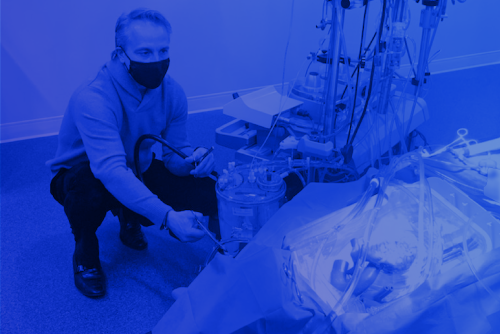For hospitals and medical centers, the need for perfusion services continues to increase, and the practice has never been more relevant. Additionally, major shifts in the healthcare industry will also influence practitioners.
Let’s see how the evolving role of the perfusionist will be impacted by these new trends.
ECMO Beyond the OR
Traditionally, extracorporeal membrane oxygenation (ECMO), also known as extracorporeal life support (ECLS), was limited to surgical procedures, namely heart bypass. Other procedures, such as heart, lung, and heart/lung transplant have since been added to the situations where qualified perfusionists are indispensable.
Currently, a wide variety of clinical scenarios now involve the use of ECMO/ECLS either as standardized care or as part of clinical investigation, and the list continues to grow.
Some scenarios where perfusion may be required include:
- Hypoxemic respiratory failure
- Hypercapnic respiratory failure
- Refractory cardiogenic shock
- Cardiac arrest
- Failure to wean from cardiopulmonary bypass after cardiac surgery
- As a bridge to heart transplantation or lung transplantation
- Septic shock
- Hypothermia
- Acute respiratory distress syndrome (ARDS)
- Acute viral pneumonia associated with SARS-CoV-2 infection
- Transplant organ preservation
Decision Making & Team Skills
Communication failures are often at the root of adverse events for surgical patients. Increasingly, surgical team integration flattened hierarchies, and standardization is being implemented in an effort to improve outcomes. Checklists, safety briefings, and teamwork training are common techniques used to improve communication in the operating room.
In the modern OR, the surgeon is no longer the only voice. Rather, surgical teams work as a cohesive unit, and the perfusionist is expected to be a contributing member of the team. In addition to technical expertise, this means developing soft skills, such as clear communication, active listening, and teamwork interaction.
Impact of Big Data
In healthcare, the rapid expansion of Big Data methodology is part of an effort to enhance research capabilities, reduce costs, and improve outcomes.
Many hospitals across the country are transitioning their traditional databases to Big Data infrastructure. Advanced data capture and categorization tools such as natural language processing (NLP) and optical character recognition (OCR) are being developed for clinical and research use. Meanwhile, the Internet of Things (IoT), in the form of wearable technology and connected sensors, serves as a key source of data.
As cardiothoracic surgeons seek ways to innovate, novel approaches to data acquisition and analysis will be part of the new reality. For perfusionists, there is a constant relationship with clinical data that can be collected and analyzed. In the evolving role of the perfusionist, there will be a required understanding of how digitalization impacts clinical and research activity.
Article references:
AmSECT’s Task Force on the Expansion of Perfusion Scope of Practice
https://www.amsect.org/page/scope-of-practice
30 to 39 pct of severe COVID-19 patients discharged from Wuhan hospitals: official
http://www.xinhuanet.com/english/2020-02/15/c_138785933.htm
Interprofessional communication in the operating room: a narrative review to advance research and practice
https://link.springer.com/article/10.1007/s12630-019-01413-9
Advanced-Data Analytics for Clinical Research Part I: What are the Tools?
https://journals.sagepub.com/doi/abs/10.1177/1556984520902783?journalCode=inva






